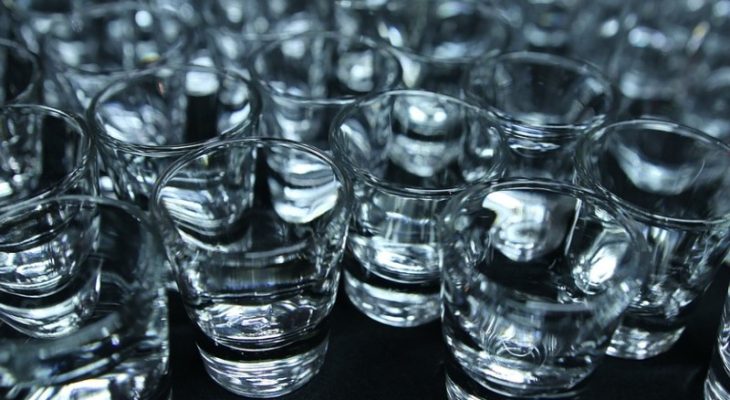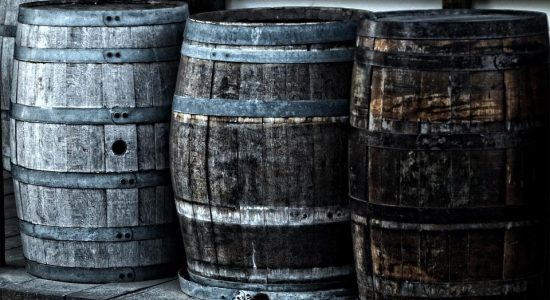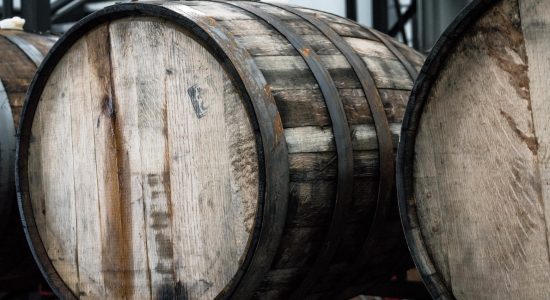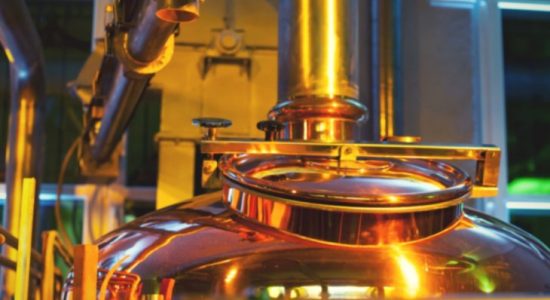How To Make Moonshine Without Methanol (Complete Guide)

If you love your moonshine, you might be curious about the distillation process and want to try it yourself. You’ve probably also heard horror stories about people who get sick and even die from methanol poisoning.
To distill moonshine without any methanol, you must discard the first portion of your distillate containing poisonous compounds. Avoid using fruits with a high pectin content for your mash, and ensure you sterilize your fermentation equipment before use.
If you’re serious about making moonshine, I suggest reading on – it could save your life. Check out my Complete Guide on How to Make Moonshine if you want a step-by-step explanation of the process.
1. Don’t Use High-Pectin Fruits for Your Mash
Pectin is a starch found in many different kinds of fruits, with varying degrees of concentration. If you’re making jam, this is desirable—but when you’re making ‘shine, less is always more.
I would advise anyone starting to make moonshine to avoid the problem altogether by selecting fruit for your mash that doesn’t have a high content of the stuff in the first place. You can also use a combination of low-pectin fruits to make a blended mash.
- Peaches and Apricots – The thriving peach industry isn’t the only reason peach and apricot moonshines are so popular. These fruits have a low pectin content, making them excellent choices for your mash.
- Strawberries – This might surprise you because they are so popular as jam, but strawberries don’t contain much pectin either.
- Ripe Cherries – If you’re on the West Coast, you might be able to get cherries in bulk from one of the numerous cherry farms in the region.
These are just a few options. You can use almost any fruit to make moonshine, even if they have moderate amounts of pectin. I advise beginners to stick with low-pectin fruits.
2. Use the Right Yeast for Your Moonshine
Not all yeasts are alike. Yeasts are fascinatingly complex microorganisms and come in a variety of different strains.
Just like you will want to avoid fruits with high amounts of pectin, you will want to select a yeast that will create less methanol as a byproduct of its metabolism.
- Red Star Distillers Yeast (available on Amazon.com) is a famous distiller’s yeast available on Amazon. Accept no substitutes for a quality distiller’s yeast.
- Distiller yeasts are carefully selected to minimize methanol production.
- There will still usually be trace amounts of methanols in your distillate. They are not harmful in low concentrations,
- Storing your mash correctly while fermentation takes place is essential. Refer to my guide on storing moonshine mash—there are a few ways you can do it.
3. Sterilize Your Fermentation Equipment
The first step to avoiding methanol in your shine is to ensure your fermentation equipment is free of any rogue bacteria that might contaminate your mash.
Adopt a ritual of cleansing your equipment, and remember that this is a science.
- Use a brewing sanitizer like Fastrack Logic Rinse-Free Brewing Sanitizer off Amazon. It’s safe for brass, copper, aluminum, polycarbonate, and vinyl.
- Do not use abrasives on a plastic container. Try a Lubrima Silicone Sponge Dish Scrubber (available on Amazon.com)—the soft silicon will not harm plastics.
- Make sure you take everything apart. Bacteria can hide in joints and small crevices, so any pipes you use should be disconnected entirely and sterilized piecemeal.
4. Know Your Heads, Hearts, and Tails
You probably already know that methanol is dangerous. Still, I like to make things clear when talking about the distillation process—it’s a science as much as it is an art, with the science part being somewhat more critical since getting it wrong could be fatal.
You might hear people talking about the heads, hearts, and tails of their distillate. Here’s a short description of each:
- Head–This is the first part of your distillate. How much head you have depends on the quality of your mash. You discard the head, as it contains all the dangerous compounds. You will have to dump more when distilling a low-quality mash.
- Heart—This is what you want! Ethanol (drinkable alcohol) boils at around 175°F – 180°F (80°C – 82°C).
- Tail–This will be the final portion of the distillate—you may also discard this part since it contains barely any alcohol. It will only make your moonshine taste bad.
This delicate process requires quality equipment, patience, and attention to detail. You must be careful—cut off the head too early, and you will still have dangerous methanol compounds in the mix.
Getting to the Heart
You discard the head part of your distillate because the dangerous methanols have a lower boiling point than the desirable ethanols.
This potential toxicity highlights the importance of a quality mash with less inherent methanol. You should also keep the following points in mind:
- It’s always better to make your “first cut” or discard the first portion of your whiskey after the pot reaches between 175°F – 180°F.
- Ensuring the correct temperature will allow you to get as much of the toxic compounds out of your final product.
- The optimum temperatures will dissipate these poisonous chemicals. We advise discarding around 10% of your distillate if your mash is decent.
5. Test for Methanol
You’ve managed to work through the process of creating your moonshine, and now you want to test it for methanol.
- Methanol has a pungent odor. If your ‘shine’ smells funky, ensure this is not due to the presence of methanol in your moonshine.
- You can set a sample of your distillate alight–if there is a high concentration of methanol, it will burn with a yellow flame. Ethanol burns blue.
- A red flame indicates lead contamination. Refer to my buyer’s guide for good still that won’t contaminate your product.
Closing Notes
Homemade moonshine is not just about how you distill your mash. Avoiding methanol starts at the very beginning with sterilizing your equipment before you make your mash.
Making moonshine without methanol requires vigilance throughout the whole process. With this information, you can make more informed choices if you decide to make your own.







